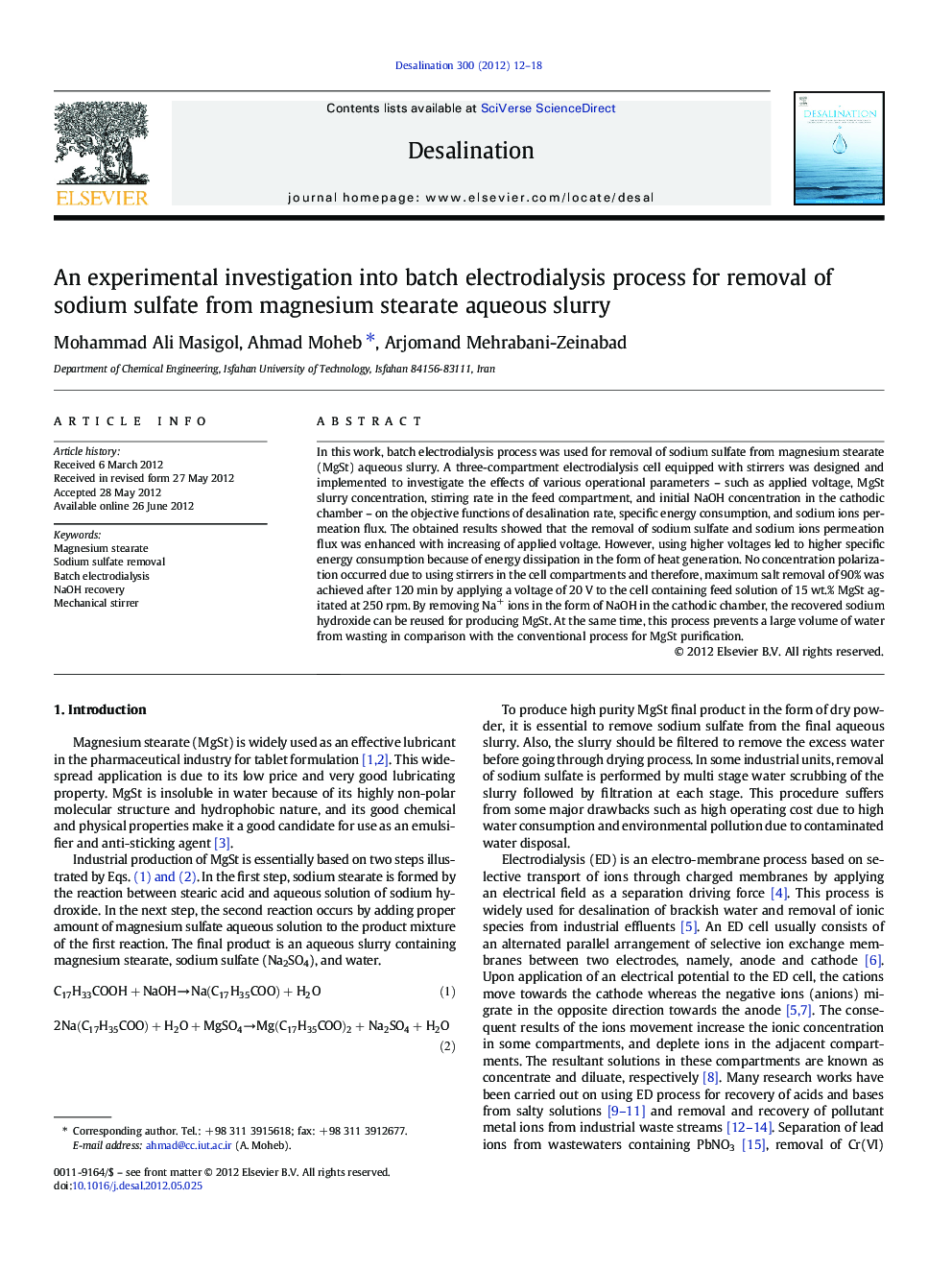| کد مقاله | کد نشریه | سال انتشار | مقاله انگلیسی | نسخه تمام متن |
|---|---|---|---|---|
| 624096 | 1455391 | 2012 | 7 صفحه PDF | دانلود رایگان |

In this work, batch electrodialysis process was used for removal of sodium sulfate from magnesium stearate (MgSt) aqueous slurry. A three-compartment electrodialysis cell equipped with stirrers was designed and implemented to investigate the effects of various operational parameters – such as applied voltage, MgSt slurry concentration, stirring rate in the feed compartment, and initial NaOH concentration in the cathodic chamber – on the objective functions of desalination rate, specific energy consumption, and sodium ions permeation flux. The obtained results showed that the removal of sodium sulfate and sodium ions permeation flux was enhanced with increasing of applied voltage. However, using higher voltages led to higher specific energy consumption because of energy dissipation in the form of heat generation. No concentration polarization occurred due to using stirrers in the cell compartments and therefore, maximum salt removal of 90% was achieved after 120 min by applying a voltage of 20 V to the cell containing feed solution of 15 wt.% MgSt agitated at 250 rpm. By removing Na+ ions in the form of NaOH in the cathodic chamber, the recovered sodium hydroxide can be reused for producing MgSt. At the same time, this process prevents a large volume of water from wasting in comparison with the conventional process for MgSt purification.
► Sodium sulfate was removed from magnesium stearate slurry by ED process.
► NaOH was recovered and could be recycled to the MgSt production process.
► It was avoided from generation and discharging salty water to the environment.
► High desalination percentage of about90% was for the best operating condition.
► Using stirrer in the feed compartment avoided concentration polarization effect.
Journal: Desalination - Volume 300, 15 August 2012, Pages 12–18